As London’s third-largest park, Victoria Park is no secret to east Londoners, but is one of the city’s unsung heroes. Planning your trip? Here’s what you need to know before you go.
218 acres of cultivated green space, wide parkland interspersed with tennis courts, a bowling green, fountains, cafes and lakes – Victoria Park – Vicky Park or the People’s Park to the locals – is the undisputed king of east London’s outdoor spaces.
Founded as the People’s Park – it has served East London as was always intended; as a breathing space and green escape for the area’s inhabitants.
There’s more to Victoria Park than just open space though. Keep your eyes open for traces of the park’s non-conformist history – or search out its beautifully landscaped English Garden. There’s plenty to discover.
Why Should I Visit Victoria Park?
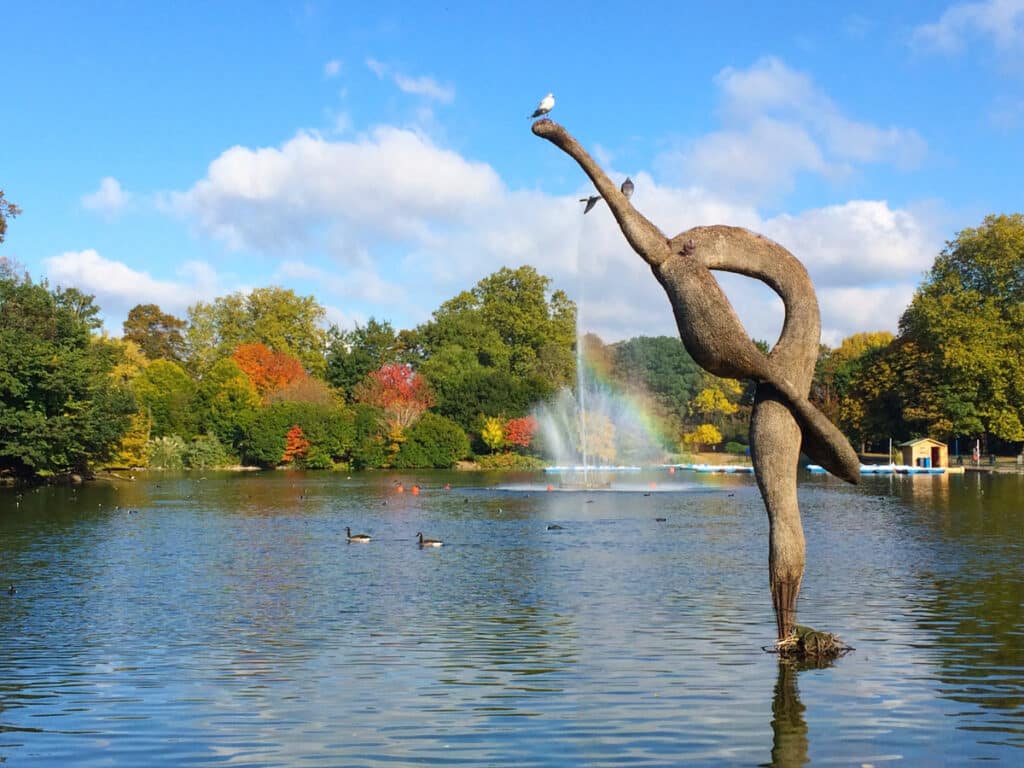
Bordered by Regent’s Canal, Victoria Park is one of the capital’s prettiest – not to mention most varied. Whether you’re looking for a quiet spot for a picnic and sunbathe, want to work up a sweat on the tennis courts or just want to go for an easy stroll, it’s got plenty to offer.
Designed by James Pennethorne in 1841, Victoria Park is divided into two parts, West and East by Grove Road.
The smaller West Park boasts Victoria Park Lake, while you’ll find the Victoria Fountain, Bowling Green and Athletic Field in the larger East Park.
Things to do in Victoria Park
Victoria Park Market
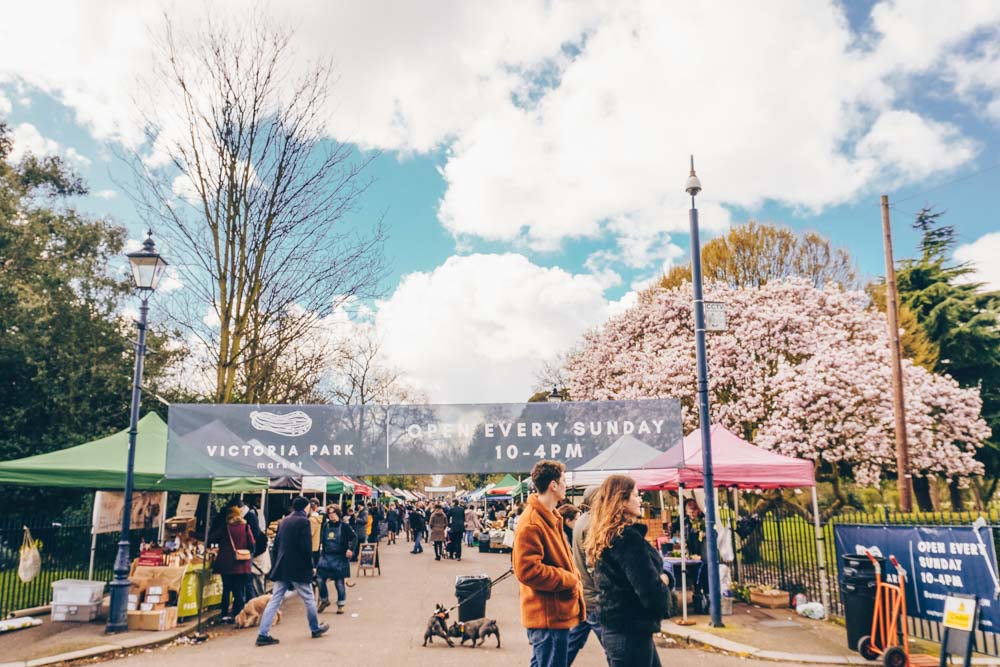

Victoria Park’s Sunday Market is one of my favourites in the city – a unique melange of street food, artisan retailers, farmers and food producers with a friendly atmosphere, all aided by craft beer and organic juices (naturally).
Summer Festivals

The festivals that normally grace Victoria Park may be cancelled this year, but that won’t change the park’s reputation for hosting some of the highlights of London’s musical calendar.
Long-standing festival stalwart Lovebox has been replaced in recent years by All Points East and other smaller festivals, bringing revellers to the park to enjoy the sounds of talented acts from around the world.
It’s a fitting way to carry on the park’s long-standing musical heritage – The Clash ushered in the Punk era with their performance here as part of the Rock Against Racism festival in 1978.
Victoria Park Lake
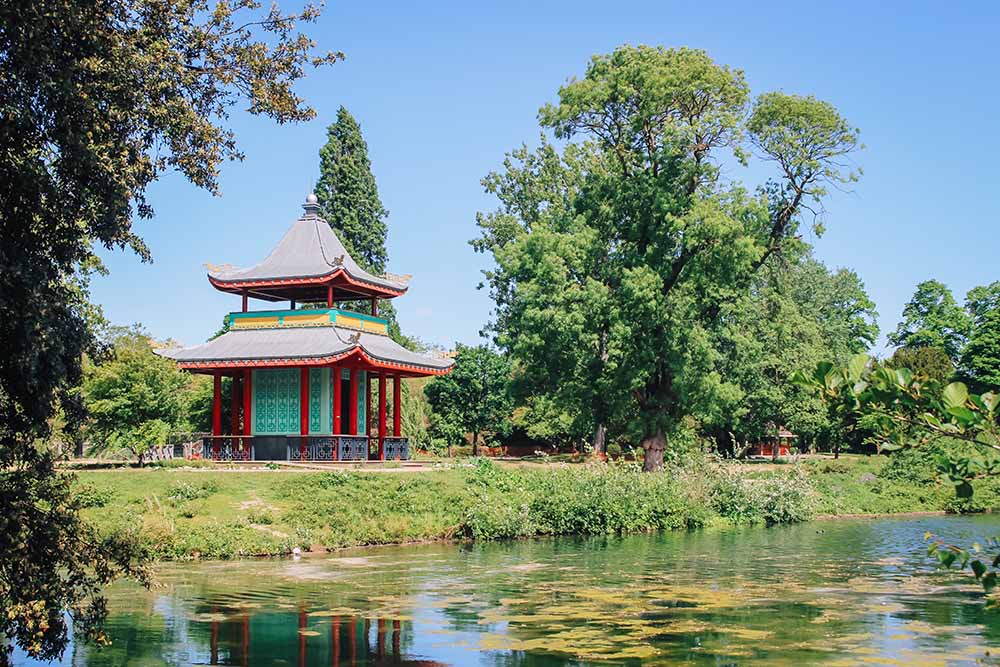
The lake, teeming with ducks and swans, is also home to two sculptures by Romanian artist Erno Bartha. The sculptures, Bird and Skyscraper invite viewers to experience unspoiled nature in the midst of the park.
Perched on one of the lake’s islands, the Chinese Pagoda may have undergone recent renovations, but its history stretches all the way back to 1847 when it was transplanted here after a Chinese Exhibition at Hyde Park Corner.
The Pavilion Cafe
Sitting next to the lake, The Pavilion Cafe bucks the trend of disappointing park cafes to offer a tasty (if somewhat expensive) menu of breakfasts, lunches and snacks.
PS. The organic cakes are a sure-fire hit.
Take the Victoria Park Memoryscape Trail
Want to dig into the past and the stories that fill Victoria Park? Tower Hamlets’ Victoria Park Memoryscape Trail guides you through several spots in the park, with locals talking about the myths and the memories associated with each place.
It’s a fascinating way to see the park and to understand the role it has played in people’s lives throughout the centuries.
Drinking Fountain
Sitting in the middle of the park, you’ll find a Grade II listed drinking fountain designed and paid for by philanthropist Angela Burdett Coutts (once the wealthiest woman in England). The fountain, built in 1862, cost the equivalent of £500,000 in today’s money to build and is adorned with cheeky barely-clad marble boys.
While the decoration may have raised a few eyebrows in the Victorian times, the fountain actually dispensed much-needed clean water to the poor, who used to drink the water from the park’s lakes.
The Old English Garden
You could visit Victoria Park a hundred times and never come across this gem of a garden. Beautifully planted, it’s a tranquil haven amidst the throng of the city.
Planted in 1916, the Old English Garden had fallen into a rather wild state, until a 2012 National Lottery grant saw it replanted and brought back to life.
Play Sports
You’re bound to come across more than your fair share of joggers, whenever you visit the park – but there are plenty of other opportunities to get some exercise in the park too.
There are tennis courts in both the East and West Parks, three cricket pitches, a bowling green and an athletic field.
You can also hire rowing boats or pedalos to explore the West Lake in the summer months.
Children’s Adventure Playground
Smack bang in the centre of the East Park, the Children’s Adventure Playground has plenty of frames and structures to keep little ones (and not soooo little ones) out of trouble.
Next to it, the Splash Pool normally opens at the end of May to early September.
Angling Lake
While fishing used to be allowed in the West Lake, fishers are now restricted to a small lake in the East Park. Whether there are that many fish actually in the lake is another matter.
Statue of The Dogs of Alcibiades
Sitting in the park near Bonner Gate, The Dogs of Alcibiades are based on a statue that was believed to have been made for Socrates in 5bc – the one we see today was presented to the park in 1912.
The statues are surrounded by myth – including one that the dogs depicted within them saved a girl’s life – but no record has been found to confirm this.
The Hackney Wick Great War Memorial
Memorialising the sacrifice the locals made during World War I, The Hackney Wick Great War Memorial also serves as a timely reminder of the importance Victoria Park played in London’s World War II effort too (discussed in the Quick History of the Park section below).
Constructed from Cornish Granite, the tapering obelisk, square plinth and base are together inscribed with the names of 225 local men who died in the war.
A Quick History of Victoria Park
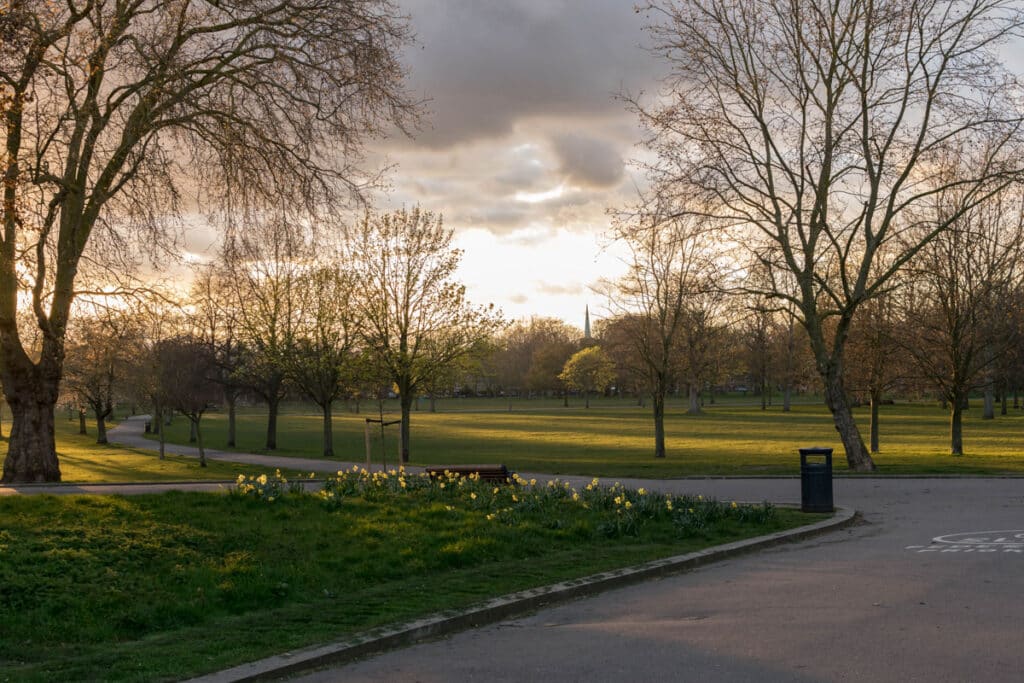
Victoria Park was designed in the 1840s to bring a green lung and large outdoor space to the densely populated East End after a mass petition to the Queen.
Landscaped by the renowned architect Sir James Pennethorne (who also redesigned parts of Buckingham Palace and landscaped South London’s Battersea Park too).
Throughout the second half of the 19th century, Victoria Park became a heartland of working class life in the East End. In addition to providing locals with a place to enjoy green space, it evolved into a hub of political meetings and rallies – at one time rivalling the better-known “Speaker’s Corner” in Hyde Park.
This tradition of public speaking and political discussion lasted until after the Second World War and still popped up in the occasional rally or concert – most notably the Rock Against Racism concerts in the 1970s and 1980s.
One such concert, in 1978, is referred to as Punk’s Woodstock after The Clash ushered in the new musical era to a crowd of 100,000 people who’d marched from Trafalgar Square that same day.
During World War II, Victoria Park was turned into an anti-aircraft site, gunning down Luftwaffe planes as they returned from bombing the city. Prisoner of war camps were created on the north-eastern edge and used to detain German and Italian prisoners.
Victoria Park itself was bombed a number of times, destroying many of the original features it had once boasted – sites such as a palm house, three lodges and St Augustine’s Church were all destroyed.
It also sustained a direct hit to an air raid shelter within the park, in which 15 people were killed.
Practical Information, FAQ and Map
Where is Victoria Park?
Victoria Park is situated in Tower Hamlets, to the north of the Hertford Union Canal and bounded by Regent’s Canal to the west.
Opening Hours?
Check Tower Hamlets website for up to date info.
How Big is the Park?
218 acres, or 882,215 square metres.
How to Get There?
The nearest underground stations are Mile End and Bethnal Green, both of which are a 10-15 minute walk away from the park.
It’s also within easy walking distance of Cambridge Heath and Hackney Wick Overground stations and served by a number of buses too.

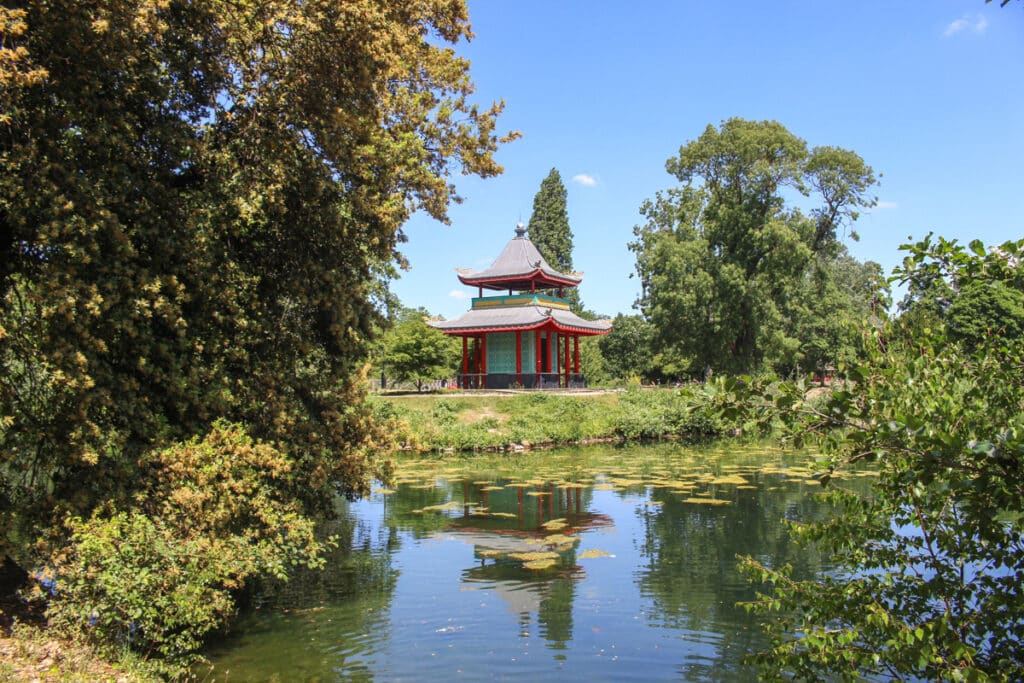
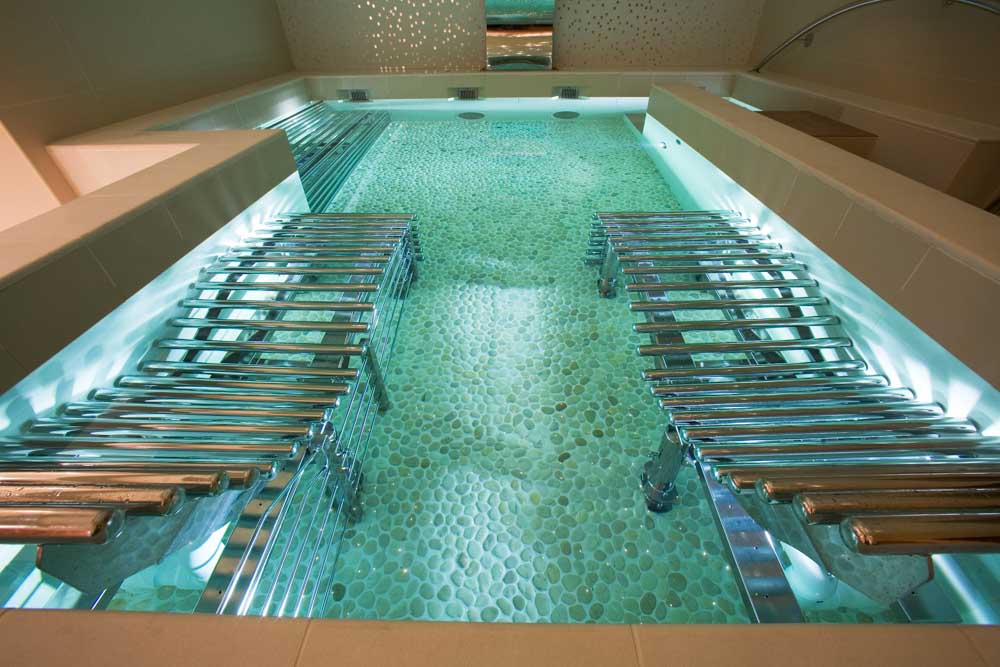
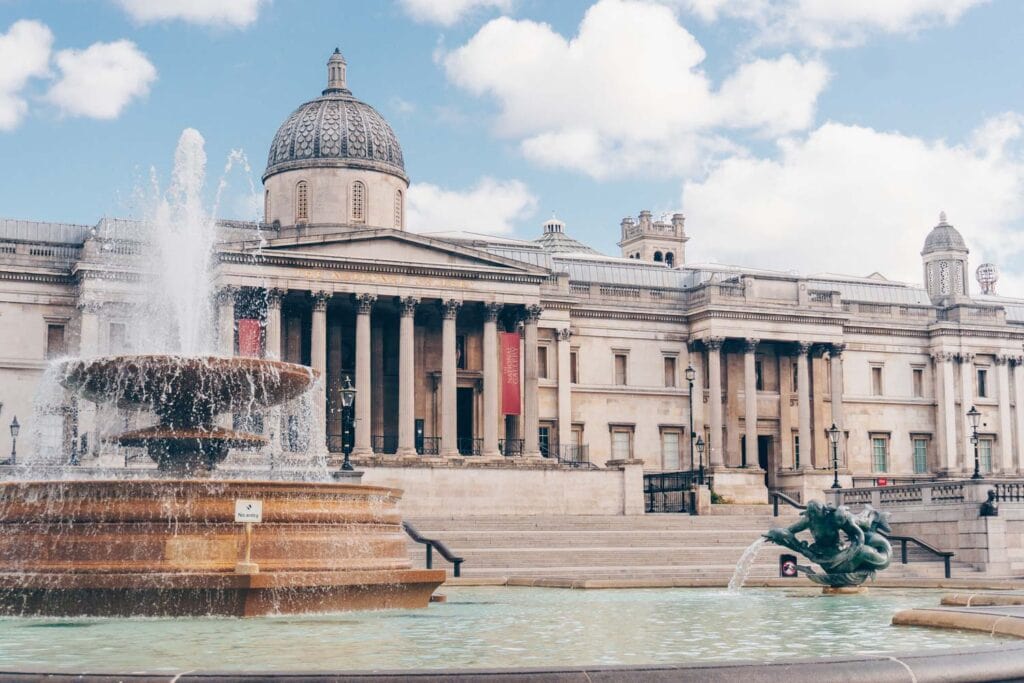
You mention that one of the Air raid shelters in Victoria Park took a direct hit in the Blitz and 15 people were killed. I think my Uncle was in there and he remembers it and his Mum digging him and his sisters out and the man next to him being killed. When they went back to there home after the raid they found there house had gone.
That’s awful. Thanks for sharing your uncle’s story Bill – London is full of personal history that deserves to be remembered.